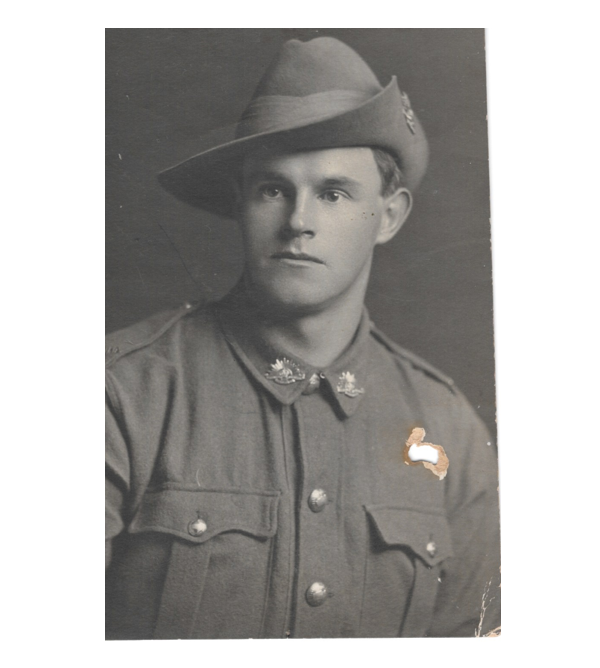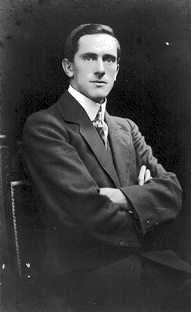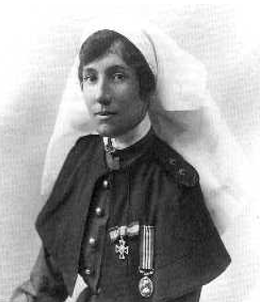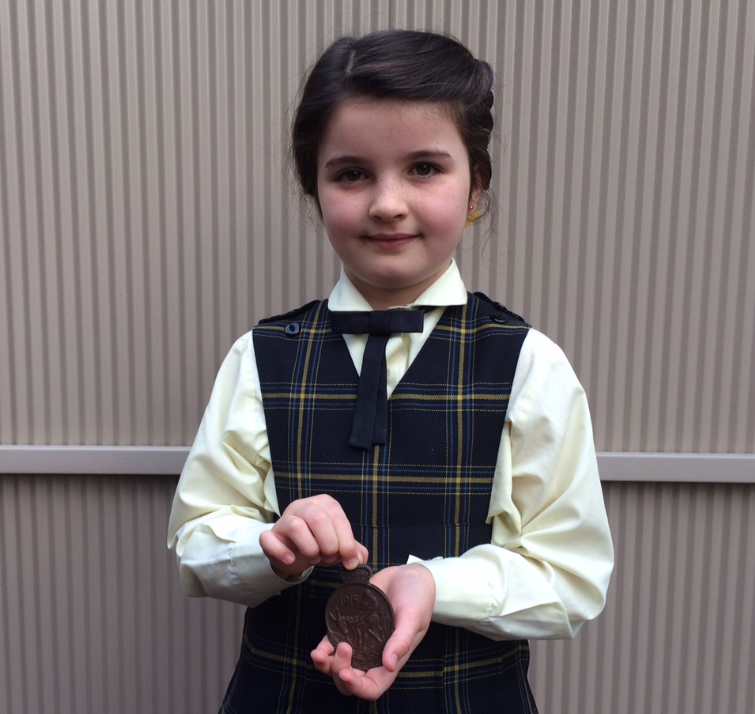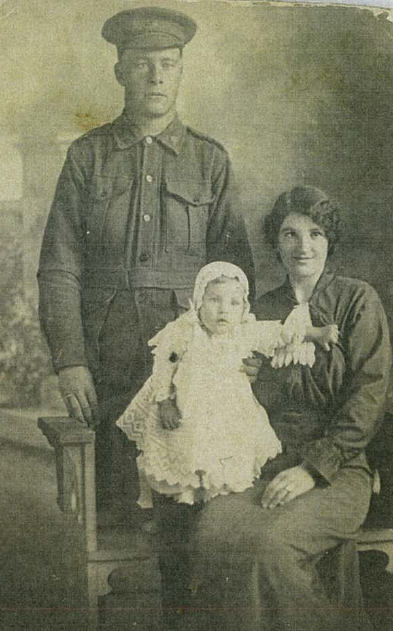Please see below the WWI stories that have been sent to us by members of our Lowther Hall Community.
Estelle Sutherland, Year 11
My great-grandfather, Arthur Ewing Sutherland joined the Australian army at 19 years of age in 1915. Like many others, he served in WW1 to travel and see the world, not knowing what the War would really be like.
We think that Arthur first went to Egypt to train; he told my dad that while he was there, he saw the pyramids and etched his initials into one- we wonder if they’re still there after 100 years.
Throughout his service in the war, Arthur fought in Europe at battlefields such as Villers Bretonneux and Poizières and was shot in the wrist and leg while fighting. While in France, Arthur was also buried alive in a shell explosion, and luckily was saved because one of his arms remained aboveground.
While serving in France, my great-grandfather was severely gassed, and had to be transferred to hospital in Kent, England. Although initially thinking himself unlucky after just missing a ship and having to wait for the next one, Arthur later found out that the boat he missed was sunk in the British Channel. While in hospital Arthur overheard his doctor telling a nurse that he only had six months to live, however in 1918, he returned to Australia and lived until he was 96. Unfortunately, Arthur lost his War Medals by leaving his coat on a tram.
I am extremely grateful for the part that my great-grandfather, as well as many others, played in fighting to keep Australia safe and free.
Alys Appleford, Year 1 (and her parents Dr Peter Appleford and Dr Susan Matthews)
I was named after my great grandmother, Major Alys (Alice) Appleford (nee Ross-King), one the most highly decorated Australian war heroines. She is a listed member on the Victorian Women’s Honour Role.
After reading “The Other ANZACs” and watching “The Anzac Girls”, my dad told me a lot about her work her life and service to World War I. Last year, my family visited her exhibition at the Australian War Memorial to see her diary and photos.
Born in Ballarat (1891), she joined the Australian Imperial Forces (AIF) in 1914 as Sister. She wore a grey and white uniform and red cape. During WWI she served as an Australian Army Nurse in Egypt (Suez), France (Rouen) and Belgium (Messines).
She was very strong and calm. During an air raid, her “great coolness and devotion to duty”, awarded her a Military Medal (MM). This is the highest bravery award available to women, and one of only seven given to Australian nurses during WWI.
She was later awarded the Royal Red Cross (RRC) and Florence Nightingale medals for being “a leader of women” and her “sense of duty, sterling solidity of character, humanity, sincerity and kindness of heart”. She “set for others a very high example” and her work helps me understand the “qualities” of a Lowther Hall girl.
Voyaging home she met my great grandfather, Dr Sydney Theodore Appleford (born 1891). He also served in WWI as Captain in the Australian Army Medical Corps, the 1st and 2nd Australian General Hospital, 2nd Light Horse and 15th Field Ambulance, and 5th Divisional Train.They were married in 1919, lived at 255 Buckley Street Moonee Ponds, had 4 children and established a medical practice and to train Volunteer Aid Detachments (VADs) between WWI and WWII. They both continued active service during WWII. Theodore served as a Lieutenant Col. at Headquarters Southern Command. Alys was commissioned as a Major. Alys later helped the Australian Red Cross and war services charities by helping war widows and children and the Australian Army Women’s Medical Service members.
Both Theodore (aged 69) and Alys (aged 81) are buried at Fawkner Cemetery. We remember Alys’s good work by giving the Alice Appleford Memorial Award, to an outstanding member of the Royal Australian Army Nursing Corps every year.
Delaney Jarvis, Year 2 (and her father Mr Rohan Jarvis)
I would like to share a story about one of my dad's great uncles, Norman Bruce Guthrie, who went to fight for Australia in World War 1 at Gallipoli, Turkey back in 1915, 100 years ago.
He was born on 6th June 1891 to parents David and Maria Guthrie in Leith, Tasmania and lived in North Motton. He worked as a labourer before going to war at Gallipoli where his unit, the 15th Battalion, departed Melbourne aboard HMAT Runic on 19th February, 1915. He had the rank of Private with his regiment number 1649.
He was only 23 years old when he left Australia and was killed in action in the line of duty on 29th May 1915, just over three months after departing Melbourne.
He is commemorated at the Lone Pine Memorial (Panel 46) at Gallipoli, Turkey. He was awarded several medals during World War 1, including 1914-15 Star, a British War Medal and a Victory Medal.
My Dad has also kept his Great Uncle's Anzac Medal from 1915 which commemorates his service to Australia during World War 1 and has been handed down through four generations in our family. My Dad has now passed this medal onto me. We are all very proud of my Dad's great uncle's efforts and participation at war at Gallipoli back in 1915, 100 years ago, in what helped shape Australia to be the great country it is today.
Chloe Bosch, Year 12 (and her father Mr Marcus Bosch)
Chloe's Great-grandfather, Commander Charles David, officer in the Royal Navy, served throughout the 1914-1918 war at sea, from the age of 15. He was a cadet on board H.M.S. “Shannon” in the 2nd Cruiser Squadron of the Battle Fleet at the famous Battle of Jutland on May 31st 1916, by the end of which one-third of his 70 “Drake Term” fellow cadets had died.
Chloe’s great-great uncle, Hugh David, two years younger, also joined the Royal Navy and witnessed the scuttling of the German fleet at Scapa Flow at the end of the war, in 1919. Her great-great-grandfather (the father of Charles and Hugh) was a Colonel in the Royal Engineers (known as Sappers) and saw service near Ypres just behind the front lines. He was later awarded the D.S.O in connection with events in Cyprus.
Her Australian great-grandfather, Joseph Mikulicic-Rodd, joined the A.I.F. and served in the trenches in Flanders where he was mustard-gassed in 1916. He survived but was partly disabled for life. Two of her great- great-uncles, Ned and Dick, served in the Australian Light Horse in Mesopotamia and Syria, where Dick took part in the famous charge at Beersheba.
Eleanor Golding, Year 9 (and her mother Mrs Linden Golding)
Eleanor Golding’s great-great-grandfather, William Francis Salvadore Sinnett enlisted in the AIF in July 1915, aged 20, just a few weeks after his wedding. He served overseas in the 22nd Battalion between August 1915 and May 1919.
He was wounded in the ankle at Gallipoli and was recovering in a makeshift hospital at the Cairo Sporting Club when his first child, my mother and Eleanor’s great-grandmother, was born in Ballarat. He was then sent to the trenches on the Western Front. At Pozières in France, he was buried alive when a trench collapsed on him during intense enemy shelling. Rescued and dusted off, he was then badly wounded in the leg and chest; but after recovering in the Cambridge Military Hospital at Aldershot, Hampshire, he returned to battle in France and Belgium.
After the Armistice, it took six months to find a ship to take him home where he met his 3½ year-old daughter for the first time. Bill was left with one leg shorter than the other; but, like many soldiers, the psychological scars of war were more damaging – and he never fully recovered. Bill’s only two brothers also enlisted: Henry, aged 33, was sent home from Egypt with a bad knee and Sydney, aged 18, was gassed in France and was invalided home.

Georgina O'Mahony-Holmes, Year 10 (written with her grandmother Rosemary O’Mahony nee Mason)
My great-great grandfather Robert Alfred Mason enlisted in the 3rd Light Horse Regiment for service in the Australian Imperial force on the 24th of August as part of the 1stBattalion in 1914 and returned home on the 15th of August 1916. During this time he was involved in operations in Gallipoli. When my great-great grandfather enlisted in the war his only child was three years old.
Robert Mason understood the difficulties of war as he also served in the Boer War in Africa; however, he found the conditions in Gallipoli particularly grim. Robert’s thoughts were recorded in a letter he wrote to a young girl who sent him a pair of hand knitted socks. This letter was later published in a local Australian newspaper. He quotes “I am going to say something of modern warfare –trenches with dead bodies in stacks close on your trench melting with the heat of the sun- the maggots walk into your trench and get on the clothes you eat, sleep, and fight in.” Robert Mason also speaks of the Anzac spirit, a quality that is often admired in Anzac war veterans. He writes, “We grumble and complain, but laugh with the same breath.”
Robert Mason received a Distinguished Conduct Medal in 1915. This is an extract from the citation; “He performed exceptionally good work and exhibited a complete disregard of danger… He gave a splendid example of courage and devotion to duty. “
Obviously my great-great grandfather was concerned about the Australian reaction to the Gallipoli campaign. He writes, “If we disappointed you in Gallipoli it was not our fault. We did all that was asked of us, but we could not do the impossible.” Little did he know that 100 years later, Australians would recognize and commemorate the significance of this effort.
Tyler Clark, Year 3 (and her mother Ms Bronwyn Clark)
My great-grandfather, Private Arthur Cecil Mollison was born in Numurkah (Victoria) but enlisted at Cootamundra (NSW) on 3rd September, 1915, aged 27. After a period of training with the Australian Imperial Forces he embarked on 8th March, 1916, on “HMAT Star of England” with the 1st Infantry Battalion. His number was 4814. He was later transferred to the 53rd Battalion. He saw active service in France but was captured by the German Army and was interred as a Prisoner of War in Germany on 20th July, 1916, until 18th December, 1918.
He returned to Australia on “Argylshire”and was discharged from A.I.F. on 25th November, 1919. Arthur later discovered that his 3 brothers – David, Geordie (George) and John also served in World War I. They had been separated from each other after the death of their father in 1903. All of their names are entered in the Remembrance Book at the Melbourne Shrine of Rememberance. Arthur’s name is also on the Honour Roll at Narrandera(N.S.W.) and the Prisoner of War Memorial Wall in the Ballarat Gardens(Victoria). He received 2 Medals for his War Service.
My other great grandfather, Private Harry Louis CLARK, also served in World War 1(1914 – 1918) His number was 3262. He enlisted on 8th November,1916, aged 18, and embarked on 16th December,1916, for overseas service with the 58th Battalion. He also saw service in France however he suffered severe nerve deafness and chronic ear infections as a result of the dangerous conditions - bombings etc that resulted in him being discharged from active service on 9th August, 1918, just 3 months before hostilities were ceased. The Armistice was signed on 11th November, 1918. As a result of his war injuries Harry was given a T.P.I. (Totally and Permanently Incapacitated) Pension some years later. He also received 2 War Service medals.
Even though I did not know my 2 great-grandfathers I am very proud of them as they, along with countless other men and women, fought for peace and the freedom which allows me to enjoy the life I have in this beautiful country of Australia.
LEST WE FORGET

Mrs Zoe Anderson (Staff Member)
My Great Grandfather, Reginald William Waring, served in the Australian Armed Forces during World War One. He was the 192nd soldier to enlist in Melbourne during August, 1914. He served at Gallipoli and miraculously survived. After Gallipoli he went to serve in France, on the Somme.
His younger brother (my Great Great Uncle), Howard Palmer Waring, also served during World War One. He was the 299th soldier to enlist in Melbourne during January, 1915. Howard was sent to serve in France, on the Somme and died during battle of wounds. He was 20 years of age.
Isabel Luscott, Year 4 (and her mother Mrs Lucy Allison)
William Frederick Forbes is the Great Great Grandfather of Isabel Luscott in Year 4. William Frederick Forbes was born in 1893 in Walhalla, a gold mining town in Victoria. He enlisted in WW1 on 29th December 1915 and embarked from Melbourne as part of the 22nd Battalion. William fought on the Western Front in France. He sustained a shrapnel wound to the chest in May 1917 and spent time in hospital in England. After returning to the Western Front he was shot in the head in May 1918 and nearly died. After spending many many months in hospital recuperating he sailed back to Australia after the war had ended on the Somali, arriving home on the 8th February 1919. He had spent 3 years away from his wife and baby. After returning home he didn’t return to Walhalla, as did many other families. The exodus of men going to war and their wives and children moving away during this time was the beginning of the end for the once booming town of Walhalla.
This photo is of William and Lois Forbes. The baby is Cecil who is Isabel’s great grandfather.
Lauren Hartnett, Year 12
My great-grandmother had two brothers who went to war. One came back, one didn’t.
Thomas James Cooper, born in Bendigo, was a Private in the 7th Battalion, 5th Reinforcement. He was sent to Gallipoli in 1915 and was wounded at the Battle of Lone Pine. Then after surviving that he was sent to Belgium where he was listed MIA in the Battle of Ypres and declared KIA in 1918. He left behind a wife (Ellen) and six children. They lived in Castlemaine.
Norman Leith Cooper, a school teacher from Kerang, was much luckier. He was a Lance Corporal in the 8th Battalion, 13th-23rd Reinforcements. He enlisted in 1915 and embarked from Melbourne on 1st April 1916 aboard the HMAT Suffolk. He was gassed in a battle in France, but got home in 1919 to live a long life. The two brothers did manage to come together while overseas. One day on a battlefield in the trenches they found each other and played cards. Sadly, soon after, Thomas was killed.
Lily Barrett, Year 1 (and her father Mr Phil Barrett)
My Great Grandfather Arthur Barrett had three brothers, Edward{Ted}, Michael and Leo who were all in World War 1.
Edward was in the Royal Artillery. He was awarded the Military Medal for getting his horses and recovering his gun back to safety in the face of the advancing German forces. A few days later he was given a battle field commission.
Michael Barrett was in the Royal Engineers and died from his wounds received during the Battle of the Somme. He is buried in one of the many Commonwealth Cemeteries in St. Saver near Rouen with over 6,000 other soldiers.
Leo Barrett was training for the priesthood in Ireland when he heard of Michael’s death. Family folklore has it that he left the Monastery and joined the British Army and served in the Dorset Regiment. May not have fought in Europe was probably training at the end of the war.
Mardi Sutherland, Year 9
John Carlyle McKellar, my great great uncle, wrote a postcard to his sister, Lily, my great great grandmother on the 29th of September 1917, reassuring her that he was ‘still going strong’, however passed away just two months later from wounds on the 26th of October. Prior to enlisting, John lived on a farm near Warrnambool and later became a teacher at Shepparton. An obituary states that he was very well liked by his students and the staff, but sadly he died from multiple shot wounds and so never returned. My family is fortunate enough to have this postcard, the last communication received from him. In it, John asks Lily to ‘give [his] kind regards to Wal Ching’s sister.’ We believe he must have been keen on her. Unfortunately, Walter Ching was killed in action in October 1917 in Belgium. John’s brother, Duncan Mitchell McKellar also enlisted, thinking he was embarking on a great adventure. After going missing on the 11th of April 1917, it was discovered he was killed in the enemies hands as a prisoner. My great great uncles made an extraordinary sacrifice, as did many other Australian diggers, and I am forever thankful for it.
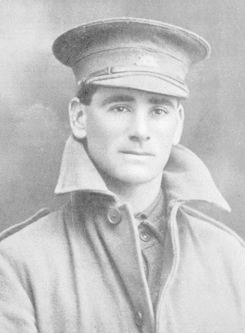
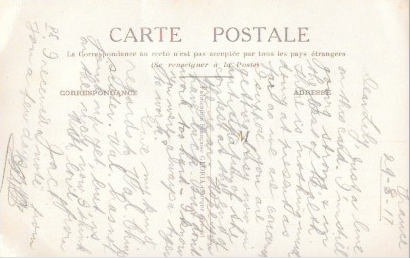
Isabel (Year 11) and Emma (Year 9) Thompson (and their mother Mrs Louise Thompson)
Eades, Alfred Bailey (Lieutenant)
Birth date: 1895
Birth place: Australia: Victoria, Melbourne, Essendon
Death date: 12 November 1918
Death place: United Kingdom: England, Greater London,
Wandsworth
Final rank: Lieutenant
Service number: 4642 - First World War, 1914-1918
Units: 12th Australian Field
Artillery Brigade
·
46th
Australian Field Artillery Battery
Alfred Bailey Eades is the great, great uncle of Isabel (Lees) and Emma (9P) Thompson. He was born at Essendon, Victoria in 1895 to parents Arthur and Louisa. Prior to the First World War, he served for two years with the 25th Battery of the 8th Field Artillery Brigade, Citizen Military Forces where he attained the rank of sergeant in 1914. A clerk by trade, he enlisted in Melbourne on 7 May 1915 at the age of 20. On 10 August 1915, he departed Melbourne aboard RMS Persia with the 2 Field Artillery Brigade and the rank of gunner. Alfred’s cousin, General Sir Cyril Brudenall Bingham White also served during the First World War.
After landing at Gallipoli on 13 October 1915, Alfred was transferred to the 2nd Brigade Ammunition Column and remained on the peninsula until the evacuation in December. In February 1916, he was transferred to the 4th Division Artillery and in March 1916 he was again transferred to the 12th Field Artillery Brigade. He then served in France and was promoted through the ranks to second lieutenant in June 1916 and lieutenant in February 1917.
Alfred died on 12 November 1918 ( the day after Armistice Day) in London General Hospital due to complications from influenza at the age of 23. Alfred Eades is buried at Brookwood Military Cemetery, United Kingdom
Ruby Currie, Year 5 (and her mother Ms Kara Christoe)
Ruby’s Great Great Grandfather Arthur Joseph MacKenzie was born in NSW on 30/1/1883. He became a doctor and lived in Glen Innes at the outbreak of the war. He was a member of the local militia but joined up in 1918 in the Australian Medical Corps. He was promoted to Lieutenant Colonel in June 1918. He served on the Hospital Ship (HS) Kannona.
His main claim to fame is that he was the medical officer in charge when the HS Kannona picked up two former prisoners of war who were being repatriated to England. Their story is told in the book “The Road to En-dor”. The Road to En-Dor is an autobiographical account of life in, and escape from, a Turkish prisoner-of-war camp, Yozgad, in 1917. It was written by EH Jones, and explains how his use of a Ouija board to entertain his friends became, with the assistance of Australian officer (and amateur magician) Cedric Hill, an escape attempt, using the cupidity of their captors. Jones and Hill convinced the Turks (and many of the British officers) that they were mediums in telepathic communication, and, under the direction of a spirit guide, would be able to find hidden gold. Their escape attempt ended in their imprisonment in a Turkish insane asylum, and in repatriation shortly before the end of the war. Your Great Grandfather is mentioned at the end of the book. I believe it is to be made into a film.
The picture is taken on the HS Kannona when they handed the ‘escaped’ prisoners over.

Eda Kahveci, Year 2 (and her father Mr Ali Kahveci)
I am Eda Kahveci's father, Ali. My Grandfather and my wife's grandfather were in Gallipoli during the WWI, but not on the ANZAC Side, they fought on the Turkish side.
After WW1 finished, Founder Of Turkey Kemal Ataturk wrote this tribute to the ANZACs killed at Gallipoli in 1934:
"Those heroes that shed their blood and lost their lives... You are now lying in the soil of a friendly country. Therefore rest in peace. There is no difference between the Johnnies and the Mehmets to us where they lie side by side now here in this country of ours... you, the mothers, who sent their sons from faraway countries wipe away your tears; your sons are now lying in our bosom and are in peace. After having lost their lives on this land. They have become our sons as well."
Steph (Year 11) and Chloe (Year 8) McKeon
Our Great,great Grandfather, Reginald Dally, left Melbourne in 1917 to fight at the Western Front. He operated as an ambulance driver before he got pneumonia and was evacuated to England. He was not expected to survive, but he did and stayed in England until 6 months after the war.
Claire (Year 9) and Caitlin (Year 12) Minney
Private Alexander Gardiner, service Number 625 24th Infantry Battalion Alexander Gardiner was our Great-great-great Uncle. He was born in England, migrated to Australia in 1912 and settled in Tongala. He enlisted in the Infantry on the 24th March aged 29.
The 24th Battalion sailed to Egypt in May 1915 to complete their training. The battalion went ashore at Gallipolli on 4th September and spent the next 16 weeks in the Lone Pine trenches with the 23rd Battalion.
We have a copy of a letter that Alexander sent home to his sister from Gallipoli.
It reads “My Dearest Hilda, I was very pleased to get your letters. I got the five in one day from you, May and Arthur. I spent all the afternoon reading them. It is so nice to hear from you all. I have not heard from Auntie yet was glad that you sent her my address as I forgot whether I wrote to her from Egypt. It was hard about poor Tom Gooder yet we are all having a hard go with the enemy in this war.
I have not seen Mr Willis yet since I have been on the Peninsular. I must get around to see him one of these days. The time seems to pass very quickly over here. I often think about you all and wonder how you are all getting along.
I would like to see the end of this war. Australia will owe me when and if only I get out all right, so now I will close love and kisses from your affectionate brother Alex Gardiner”
From Gallipoli, the battalion proceeded to France in March 1916. Alexander was killed in action on the 26th August 1916 and is buried at Villers - Bretonneux.
Grace Donovan, Prep (and her mother Mrs Amy Donovan)
Grace's Great-great Grandfather, Patrick Winfield was an ANZAC soldier in the First World War. He was 32 years old when he enlisted in the Australian Infantry Force at Geelong on the 15th November 1915. After training at Broadmeadows he was assigned to the 29th Battalion, 8th Infantry Brigade, 5th Division. His battalion embarked for Egypt on the 7th March 1916 on the "HMAT Wiltshire". After further training in Egypt and a period guarding the Suez Canal his battalion sailed for the French port of Marseilles in June 1916. His battalion was part of the Allied armies who were defending France and trying to stop the Germans getting to Paris. This battle zone in northern France and Belgium was called the Western Front, as it was on the western section of the war zone. The battles which he was involved in were: Fromelles, Polygon Wood, Somme, Molancourt, Amiens and St Quentin Canal. Patrick Winfield won a Military Medal for distinguished conduct and gallantry when he risked his life to assist a wounded man and carry him to safety whilst being exposed to heavy shell fire. This action was at a place called Corbie, near Amiens in the Somme valley. By the end of the war he held the rank of Company Quatermaster. He was married after he returned to Melbourne.
Mrs Karin Gilbert (Head of Learning Resource Centre)
My father had always been interested in researching his family history so I was fortunate to know a great deal about my early ancestors in Australia. My great great great grandfather was Henry Tuck who settled in Flinders in 1844. He had nine children so there are many descendants! One of his grandsons was Henry Thomas Tuck who fought on the fields in France and tragically died there in 1916 at the age of 19 years. The 46th Battalion was part of the 12th Brigade of the 4th Australian Division.
Private Henry Tuck died in the Battle of Pozieres in the Somme. I found out the information by doing a Name Search on the National Archives of Australia database. It was amazing to discover this as although I knew of this person in my family history I did not know that he fought and died in World War 1. There were over 30 images as well of documents associated with Henry's involvement in the War. He was the youngest of 7 children and had to have written permission from his father ( also a Henry Tuck, my family were very keen on the name Henry...) to be able to enlist. His sister May wrote in a letter on the 11th November "to make inquiries about my brother who was killed in action....would it be possible to find some particulars about the manner in which he met his death and also if we could get any of his belongings we would be much obliged." Such little information was given to families of those killed in these battles and there is no record of a grave for Henry only a name on the Villers-Bretonneux Memorial.



